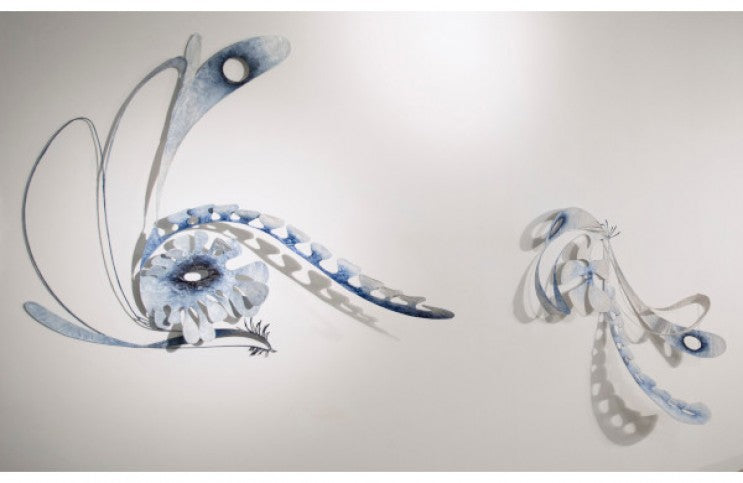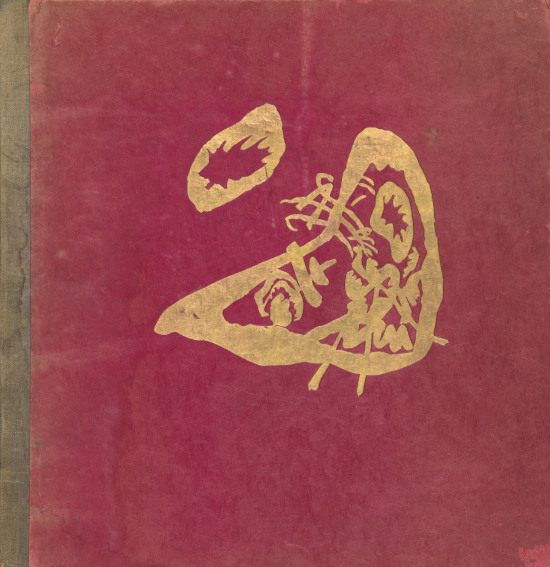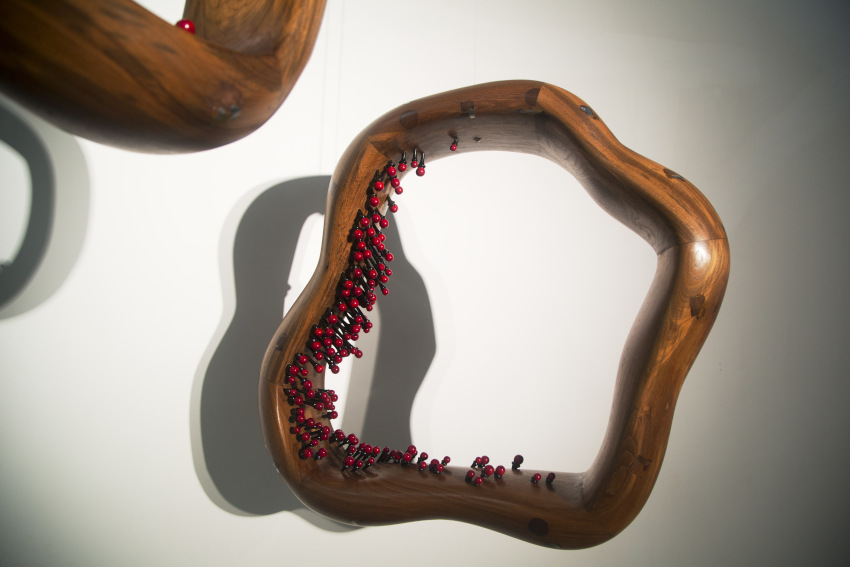
What Do Ranjani Shettar and Wassily Kandinsky Have in Common?
Late in 2018, Shearsman Books in Bristol, England, published the first ever color edition of Klänge (Sounds), the only book of prose poetry that Wassily Kandinsky ever published. Accompanying his poems in the book are 56 of his woodcuts. This summer, Indian artist Ranjani Shettar debuted a new body of work inspired by the words and woodcut images in Klänge. Presented by The Phillips Collection in Washington, DC, the exhibition is titled Earth Songs for a Night Sky. Only 345 signed and numbered copies of the original edition of Klänge were sold by publisher Piper Verlag of Munich in 1912. (One of those original copies is in the Phillips Collection; another is in the collection of the Museum of Modern Art. A black and white edition was later released in 1981.) That original book was produced during a seminal period in the evolution Kandinsky underwent towards the development of a purely abstract style. The woodcuts he created for the book are necessarily flat, their compositions significantly pared down, an aesthetic position that significantly informed his later stylistic experiments. Repeatedly throughout the book, the motif of a horse and rider appear in both the images and the words. This symbol was something Kandinsky used to signify his effort to go beyond representational art. As evidenced by the title, in addition to a visual and literary project, Kandinsky also considered Klänge to be a musical experiment. His earlier book, Concerning the Spiritual in Art (1911), explored in depth his belief that a visual language could be developed that could match the abstract emotive power of music. Klänge offers a fascinating, experimental, open minded glimpse at the development of that perspective at the moment when Kandinsky was at the precipice of his most profound accomplishments. The sculptures that Shettar has created in response to this work further demonstrate that the poetic, musical, and visual legacy Kandinsky created is still thriving today.
Compositions in Teak and Steel
Featuring seven new works of sculpture by Shettar, Earth Songs for a Night Sky is the latest in the Phillips Collection Intersections series, which invites contemporary artists to create new works in conversation with the architecture and/or existing works in the permanent collection of the museum. Klänge is the perfect subject for this unique program. Decades after the book was released, Kandinsky addressed a funny question that had been put to him many times about what had compelled him to abandon painting for other types of expression, such as writing or woodcuts. He called it simply “a change of instrument—the palette to one side and the typewriter in its place...the force which motivates my work remains unchanged: an inner drive; and it is this very drive which calls for a frequent change of instrument.”

Wassily Kandinsky - Klange, 1913. Book with 56 woodcuts. 11 1/8 x 11 1/8 x 0 3/4 in. Gift of the Miller-Plummer Foundation, 1996. © 2015 Artists Rights Society (ARS), New York
It is through her own inner drive that Shettar connects so purposefully with the work of Kandinsky. Her sculptures spring forth from both a common visual language, and a common well of musicality and nature. They bulge with form and color, transcending medium and message, expressing something essential and eternal, but also something completely individualized. Like Kandinsky, Shettar uncovers a personal sort of universality. There are some ways in which the sculptures Shettar created for this exhibition also connect directly with the visual imagery in Klänge. The biomorphic aspects of the image on the cover of the book, for example, are echoed in “Smoke Rings” (2018), a teak wood sculpture that sprouts a multitude of tiny nodules reminiscent of flower parts. The gestural qualities of many of the woodcuts are also meanwhile echoed in the two untitled, blue and white sculptures Shettar created for the exhibition using Fabric, steel, and tamarind seed glue.

Ranjani Shettar - Smoke Rings, 2018. Teak wood and lacquered wood. 52 x 62 x 86 in. Courtesy of the Artist and Talwar Gallery, New York/New Delhi
Kandinsky, Shettar, and Klee
In addition to asking Shettar to respond to the work of Kandinsky, The Phillips Collection also invited her to make sculptures that interact in conversation with some of the works by Paul Klee that are in the permanent collection of the museum. The lineage from Kandinsky to Klee is a journey from Expressionism, through abstraction, to Surrealism and beyond. The three Klee works in the exhibition—“Arab Song” (1932), “Figure of the Oriental Theater” (1934) and “Efflorescence” (1937)—are marked by a pronounced wit, and a whimsical use of hue. Lighthearted and open, they clearly reference the aesthetic traditions of Asian art. Shettar masterfully extends the visual qualities of these works with two teak wood sculptures: “From under and above” (2018), a hanging piece reminiscent of a screw, and “Peppercorn” (2018), a form that evokes the smooth stones and plant life found in water worn tide pools. Aesthetic echoes of both of these sculptures can be deconstructed from the figures in “Arab Song” and “Figure of the Oriental Theater,” but again it is much more the spirit of the compositions that comes to life in the works Shettar made.

Paul Klee - Efflorescence, 1937. Oil on cardboard, incised. 13 1/8 x 10 1/2 in. Acquired 1938. © 2015 Artists Rights Society (ARS), New York, NY
The spirit of Klee comes most poignantly to life in “Untitled” (2019), a 21-piece installation Shettar made from teak wood that resembles a jungle of nodules protruding from a wall. Inhabiting an uncanny psycho-state somewhere between the tentacles of a beast in a surrealist dreamscape and a bubble-tip anemone peeking out from a coral reef, this work suggests that something ominous and beautiful is in the process of becoming. This work ties in to the primordial energy of creation in its purest form, something that was so essential to the work of both Klee and Kandinsky. Significantly, all of the works that Shettar created for this show also fit completely naturally into her own existing oeuvre, which has always been guided by the connection of humans and nature, and the intersection of the natural and built worlds. Where Kandinsky searched for the spiritual, and Klee searched for the dreamlike, Shettar searches for poetic expressions of a poignant, delicate, uncanny reality. In this body of work, all of these forces come together in a unique, nuanced and distinctly contemporary way.
Featured image: Ranjani Shettar - Untitled, 2019. Fabric, steel, tamarind seed glue and pigment. 461 x 108 1/4 x 18 in. Courtesy of the Artist and Talwar Gallery, New York/New Delhi.
All images used for illustrative purposes only
By Phillip Barcio






